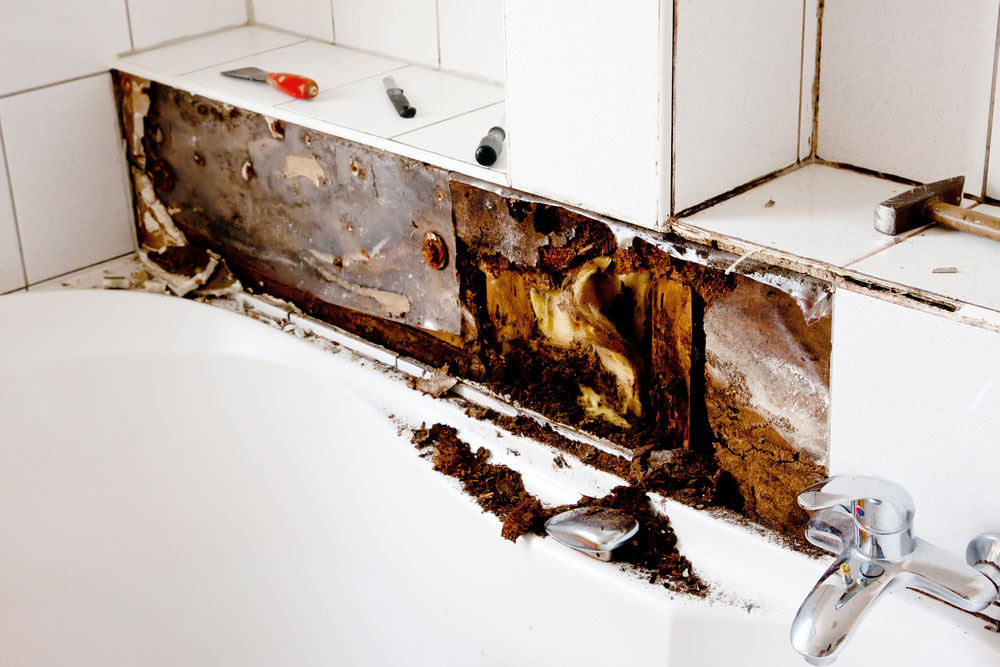Searching for Indications of Water Damage in the Bathroom
Searching for Indications of Water Damage in the Bathroom
Blog Article
Just how do you feel with regards to Preventing Water Damage in the Bathroom?
The shower room is extremely prone for moist buildup as well as possible water damages due to the regular use of water in it. This write-up uses simple assessment techniques to aid discovering water damage dangers.
The frequent use water in the restroom makes it exceptionally susceptible for damp accumulation as well as potential water damages. By inspecting it on a regular basis, you can reduce water associated damages.
The complying with set of assessments is simple to execute and also should be done once in every three months in order to maintain your washroom in good shape and to avoid prospective water problems brought on by the bath tub, the shower, pipe joints as well as plumbing, sinks, closets, and the bathroom
Do not disregard executing these inspections and be extensive while executing them. Remember that these easy evaluations can conserve you a great deal of money by offering very early signs for water damages
Bathtub and Shower
The shower as well as tub call for unique attention and maintenance. Inspect the tiles and change if fractured. Make sure that there is no missing cement in between the floor tiles. Inspect and replace split caulking at joints where the wall surfaces meet the floor or the tub. Obstructed drains pipes and pipes issues will certainly protect against the bath tub from drying and may suggest significant troubles beneath the tub. Talk to a specialist quickly to stop architectural damage. Focus on stainings or soft locations around the bath tub wall surfaces as they might show an internal leak.
Plumbing
Signs for water damage are hard to spot because a lot of pipelines are installed inside the walls.
Pay special attention to flooring and walls moisture and stains as they may indicate an invisible plumbing problem. Check moisture levels in adjacent areas also.
Sinks as well as Cabinets
Sinks as well as cabinets are exposed to moisture and moisture day-to-day and also are usually forgotten. Check on a regular basis under the sink and also on the counter top above it. Repair any drip in the catch as it might suggest drain troubles. Check out the sink, slow-moving draining pipelines may indicate a blocked drainpipe. Change sink seals if they are split or loose.
The Toilet
The commode is an at risk water junction. Check the water lines and also look for leaks around the toilet seat, in the hose, and also under the water storage tank. If you discover any signs of dampness on the floor around the toilet, look for leakages in the toilet rim and container seals.
Know that hanging bathroom bowl antiperspirants boosts the chances for obstructions.
How to Prevent Water Damage in Your Bathroom?
Water damage repair is an expensive, meticulous, and lengthy process. Unfortunately, bathrooms are the most susceptible rooms to water damage due to toilets, showers, and sinks. Pipes and fixtures wear out over time and are not immune to damage. But all is not lost, as there are ways to prevent water damage from occurring in your bathroom.
Check Your Plumbing
Nothing lasts forever, especially pipes, which can rust and begin leaking over time. You should periodically conduct pipe inspections and pay attention for any musty smells or water stains that may indicate you need water damage repair. Here are some things to check:
Frequently test valves for your toilet, shower, and sink to ensure they are properly working. Check faucet supply lines hidden under vanities and replace when needed. Replace cracked or deteriorating caulking along sinks, tubs, and showers. If you notice a clog in your sink, call in a professional. Since you can’t check the pipes in the wall, keep an eye out for stains, drywall bubbling, musty smells, and excess moisture; if the bathroom is on a second level, check the ceiling of the room directly below for these signs. Don’t Overwork Your Toilet
One of the most common reasons bathrooms need water damage repair is due to overflowing toilets. Save yourself the hassle of cleanup by being mindful and not pushing your toilet to extreme limits. If you have young children, it is especially important to keep an eye on them when they are in the bathroom and to teach them how to avoid clogging the toilet. Here are some more tips to help prevent your toilet from overflowing:
If you have a septic tank, only use septic-safe toilet paper Do not flush anything down the toilet besides toilet paper; items like diapers and sanitary napkins will clog the piping Pay attention to your toilet’s water level: If it’s low, it could mean it is partially clogged or that there is a crack in the toilet bowl Maintain Your Shower/Tub
Replace showers or tubs with cracks or other damage; even hairline cracks can allow water to seep in and cause damage. Grout and caulk help prevent water from seeping into walls and floors, so repair them if they are chipped, cracked, or deteriorating. Replace torn shower curtains or shower doors with seals that no longer work. Dry the floor and drain water from the tub immediately after use to prevent damage from sitting water. https://www.alure.com/home-improvements-blog/resources/how-to-prevent-water-damage-in-your-bathroom

As a fervent reader about Common Causes of Water Damage in a Bathroom, I figured sharing that piece of content was really useful. Sharing is good. You won't know, you could be doing someone a favor. I am grateful for your time. Don't forget to check up our site back soon.
Go Deal Report this page